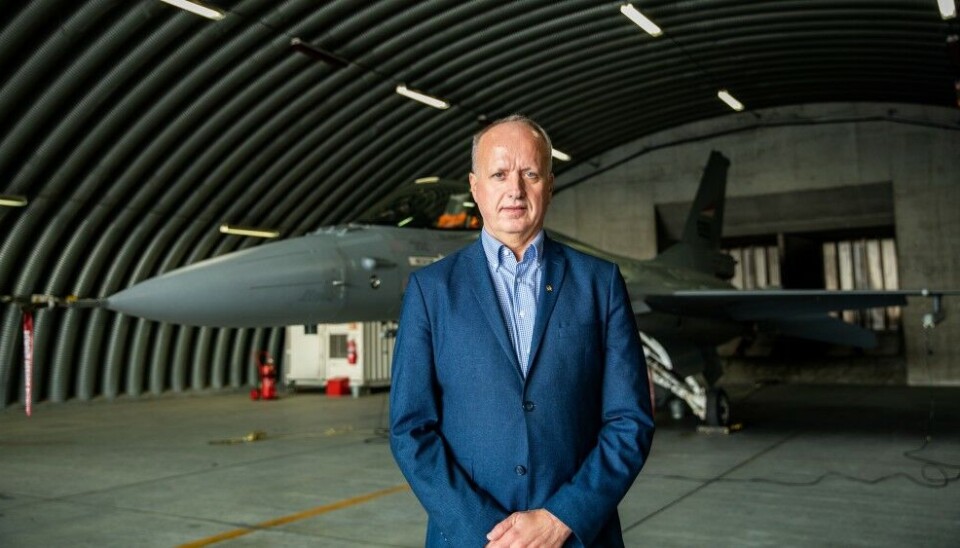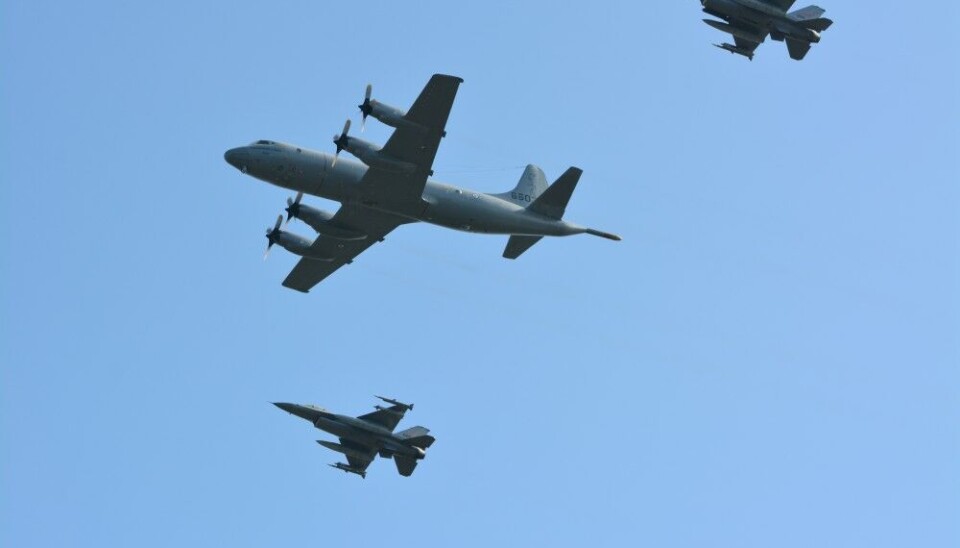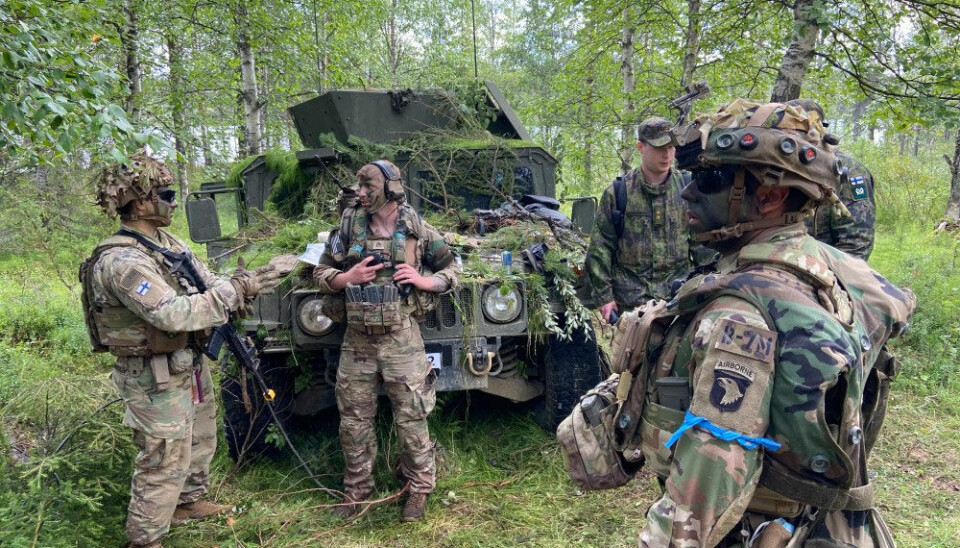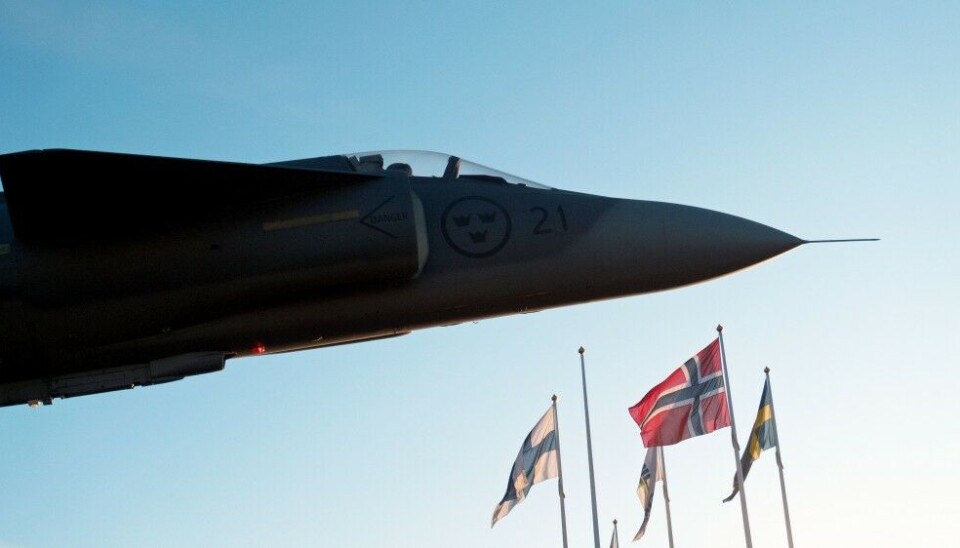
Nordic Security Policies and Strategies
The Nordic states all pursue similar security policies and defense strategies, yet there are important differences between them. A key similarity is the dual approach to international integration. For all five countries, the main element is NATO-membership and participation in the alliance’s comprehensive system of collective deterrence and defense. A supplementary and parallel approach is a regime of bi- and multilateral security and defense cooperation, covered by separate agreements with the U.S., Canada, and key European allies. The latest developments in the latter regime were the signing of three bilateral Defense Cooperation Agreements with the U.S. in December 2023 by Denmark, Finland, and Sweden, respectively.
When Finland and Sweden applied for NATO membership in 2022, one question that received attention in the public debate was whether the new members states would align with the Norwegian model of balancing deterrence and reassurance against the neighbor in the east. Finland’s approach is particularly interesting due to its proximity to Russia. Over a year later, similarities and some differences in the Nordic countries’ approaches are evident, but none are surprising. Finland has chosen a tailored path based on geography and other considerations.
This article examines how the Nordic countries have put in place different limitations on specific forms of defense cooperation involving activities conducted by, and bases to host, military units of other NATO countries. These policies are important because they shape how the U.S. and other NATO allies train and operate in the region. Because they share land borders with Russia, the policies implemented by Finland and Norway are emphasized, but the article also covers Danish, Icelandic, and Swedish policies.
Foreign Base Policy
All Nordic countries have bilateral defense agreements with several states, but for all the most significant are their agreements with USA. These agreements, while different, have in common that they facilitate the reception of military reinforcement in crisis and conflict, including measures such as infrastructure establishment, pre-positioning of equipment, and training/exercises. The agreements also provide legal frameworks for U.S. forces when they deploy for training, exercises, or other activities. Apart from Iceland and Denmark (Greenland), no Nordic country host permanent stationing of military units from USA or any other allied nations.
In December 2023, both Denmark, Finland and Sweden signed bilateral Defense Cooperation Agreements (DCAs) with USA. In 2022, the United States and Norway entered into a similar agreement, the Supplementary Defense Cooperation Agreement (SDCA), as a follow-on to previous agreements such as Invictus, COB, and MCPP-N. Through the (S)DCAs, all four countries have designated specific base/site facilities for use by U.S. forces. Finland and Sweden have designated 15 and 17 sites, respectively, while Denmark has designated 3 and Norway 12 sites. In addition, Norway also has other facilities related to previous agreements to preposition equipment from the U.S. Marine Corps.

Norway has approved the establishment of numerous facilities for NATO organizations and allied forces on its territory. From the 1950s and onwards the allied base policy has also evolved over time allowing permanent NATO headquarters and centers in Norway. Also, NATO’s AEW&C Force maintains a forward operating location at Ørland Air Base. Norway has since the Cold War period adopted its policy to allow prolonged deployments of allied forces conducting seasonal training and participating in exercises. For instance, British and Dutch military forces have since the 1970s conducted their annual cold weather courses and training programs in Norway. Currently with designated facilities in Northern Norway.
Contrary to Greenland and Iceland, there are no indications that permanent bases with operational units from other NATO countries will be established in Denmark, Finland, Norway, or Sweden. During the Cold War, U.S. forces were permanently stationed in Iceland, with up to 2500 personnel, including an F-15 fighter squadron at the Keflavik base. In 2006 the U.S. announced it would continue to provide for Iceland’s defense but without permanently basing forces in the country. Keflavik currently serves as a deployment base hosting U.S. and European fighter aircraft on a rotational basis in support of the NATO operation “Icelandic Air Policing”. U.S. Navy and other allied maritime surveillance aircraft also use the Keflavik base periodically to monitor the North Atlantic and Baltic regions and the activities of the Russian Northern Fleet. The U.S. has maintained a permanent presence at Pituffik Space Base in Greenland (formerly Thule Air Base) at 76.5 degrees north from the early Cold War until present.
Deterrence, assurance and reassurance
When Norway joined NATO in 1949, a dual security policy emerged combining deterrence with reassurance. The intention was to maintain a firm but somewhat subdued external profile towards the Soviet Union. The self-imposed limitations were also aimed to dampen internal security policy disagreements in Norway, i.e., left-wing skepticism towards USA and the alliance itself. Reassurance has been, and still is, maintained through the allied base policy, nuclear weapon policy, and geographical restrictions on allied activities near the Russian border. These are unilateral Norwegian declarations and measures, never covered by binding agreements with the Soviet Union or Russia, who have never reciprocated with similar measures. In the Norwegian terminology of deterrence and reassurance the latter is primarily intended to have an alleviating effect on Russia.
Most NATO nations use the term deterrence and assurance when alliance members in a vulnerable position request reinforcements and peacetime deployments from other states. USA, Canada and European alliance members have since 2014 increased the level of deployed forces to the Baltic and East European states. The intent is to deter Russia and assure the local government and population that they are a part of a collective defense system. These deployments, which are conducted on an invitational basis, have been expanded after the full-scale Russian invasion of Ukraine in February 2022, to alleviate the NATO-member host states.
Foreign Military Activity in Norway
Norwegian policies on nuclear weapon and deterrence have remained stable since the 1960s. However, the regime for allowing foreign military activity in Norway has undergone several changes, primarily by removing or relaxing restrictions. In the early 1950s, allied naval vessels or military aircraft could not operate in Norway beyond 68° north (just south of Narvik). In addition, the Ministry of Foreign Affairs had to approve and provide diplomatic clearance for all foreign military activity south of 68° north, including for example Danish military aircraft wishing to fly over southern Norway on their way to Iceland or Greenland. The Ministry also demanded that all applications be submitted at least 72 hours in advance. Pressure on this regime quickly arose primarily because allies could not train with Norwegian forces in the Ofoten and Troms area.
Over time, the demarcation line for foreign naval vessels and military aircraft was moved to 24° east, near Hammerfest, providing a buffer of about 250 km to the border. Allied ground forces faced an even more restrictive regime and could not train and exercise in Finnmark county throughout the Cold War. The Norwegian military itself was eventually granted authority to issue diplomatic clearances for foreign military visits in the rest of Norway, but only according to the restrictions and rules and guidelines set by the Ministry of Defense.
The restriction at 24° east was only applicable for allied military aircraft using Norwegian airports. From 1960, Norway did not allow foreign military aircraft using Norwegian airbases to fly east into the Barents Sea. However, as early as the 1950s, allied aircraft could fly to the Barents Sea in international airspace outside Norway from bases in the UK or the Keflavik base in Iceland. Even Thule Air Base (now Pituffik) in Greenland served as a base for flights north of the Soviet Union at that time. The development of aircraft with longer ranges and the ability to refuel in flight meant that allies were not dependent on Norwegian bases to fly into areas north of the USSR.
In 1995, the Norwegian system had a major revision to easier facilitate allied training and exercises in Norway. The Ministry of Defense moved away from calling the regime “self-imposed restrictions”, and instead created more “general guidelines” for foreign military activity in Norway. For example, allied land forces were allowed to participate in military exercises in Finnmark, and the restrictions in Finnmark for foreign military aircraft became far less restrictive.
The provisions for foreign military aviation that were in place in 2017 are publicly available and describe a revised regime that allows foreign military aircraft to fly east of the 24th meridian. It states that all flights beyond 24° east should be coordinated by the leadership of the Air Force in accordance with the Ministry of Defense’s “Guidelines for foreign military activity in Norway.” The new provisions allow foreign military transport and passenger aircraft as well as helicopters, under certain conditions, to fly throughout almost all of Finnmark. However, a new buffer zone has been established at 28° east, serving as an absolute limit for flights with foreign fighter aircraft. Allegedly, the authority to approve foreign combat aircraft to operate between 24°-28° east is held by the Ministry of Defense. Such authorization has been issued in the past. Back in 2014 and 2015, French fighter aircraft were allowed to use Banak Air Station and the nearby Halkavarre weapons range. They operated at least up to 26° east, as made possible by the revised provisions. Finnish F-18 aircraft have also flown into Finnmark from their own air bases in connection with Cross Border Training activities among Nordic air forces.

Allied aircraft collecting information about the Russian Northern Fleet at sea or activities on the Kola Peninsula previously had to stay outside Norwegian airspace for the entire journey to and from the Barents Sea. In recent times, Norway has allowed them to fly in transit over mainland Norway up to the western part of Finnmark. From there, the aircraft must turn northward into international airspace before heading east into the Barents Sea. Apparently, Norway continues to maintain a buffer zone in the eastern part of Finnmark that surveillance and intelligence gathering aircraft heading for the eastern Barents Sea are not allowed to transit. However, Norway allows American surveillance and intelligence to transit between the Barents Sea and Northern Finland via Mid-Finnmark.
Finland
Finnish President Sauli Niinistö stated at a NUPI seminar in Oslo on October 10, 2022, that Finland’s starting position was to join NATO fully and without conditions or reservations. Taking a full step in was also Finland’s approach when it joined the European Union in 1995. For example, they did not opt out of participating in EU security and defense cooperation, as Denmark did, and Finland is the only Nordic country that has adopted the Euro as its currency. Niinistö also mentioned in his speech in Oslo that Finland’s profile in NATO would evolve naturally over time and in accordance with changing circumstances. In other words, the Finns have chosen ambiguity, flexibility and adaptability, as compared to the more inflexible but transparent approach favored by Norway. When it comes to allowing allied bases in Finland and arrangements for multinational training and exercises in the country, Finnish authorities have only made a general statement that they as a host nation have full national sovereignty in such matters.
The Finnish government program states that Finland fully participates in NATO’s deterrence regime, which includes nuclear weapons, and attends associated planning meetings (as do Denmark, Iceland and Norway). At the same time, the current policy is to not allow the deployment of nuclear weapons in Finland. President Niinistö emphasized that it is an irrelevant issue because no NATO nations have requested to place nuclear weapons in Finland.
Foreign Military Activity in Finland
U.S. and European military forces have been training and exercising in Finland long before the country considered applying for NATO membership. Finland and Sweden have participated in the U.S. Navy-led exercise BALTOPS in the Baltic Sea for several decades. Since 2013, military aircraft from other countries have used Finnish air bases to participate in Arctic Challenge Exercise, which takes place in the airspace of the northern parts of Finland, Sweden, and Norway. In addition, U.S. Air Force tankers have regularly flown over Finland twice a year to train Finnish fighter pilots. On the ground, units from the U.S. Marine Corps have, on several occasions, withdrawn equipment from their mountain storage facilities in Mid-Norway, crossed the border to neighboring countries, and participated in exercises with units from both the Finnish and Swedish Armed Forces. Parts of the NATO exercise Trident Juncture 2018, hosted by Norway, took place in Finland and Sweden.

In 2022 and 2023, foreign units have exercised more frequently in Finland to follow up on agreements for increased presence and assurance. The background was that the U.S. and other states guaranteed for Finnish and Swedish security during the NATO application process. Ground forces, naval ships, marine corps units, and aircraft from the UK and the USA became frequent visitors in Finland. For instance, U.S. F-16s have been stationed at Rovaniemi Air Base, 150 km from the Russian border, to exercise with Finnish F-18s. At the end of 2023, Finland organized a major naval exercise in the Baltic Sea with about 20 ships from several NATO countries.
Overflights by U.S. aircraft
In one area, the Finns have been more restrictive than their Nordic neighbors. In 2018, the U.S. Air Force established the called Bomber Task Force (BTF) operation as part of the Dynamic Force Employment program. U.S. bomber aircraft have irregularly deployed from the United States to other parts of the world and flown alongside regional allied air forces. Both B-1B, B-2, and B-52 bomber aircraft have flown in the Nordic region to interact with Danish, Finnish, Norwegian, and Swedish military aircraft. In some cases, U.S. bomber aircraft have operated out of Ørland in Norway or Keflavik in Iceland in connection with BTF deployments to Europe.
U.S. bomber aircraft have flown over Sweden several times to train with the Swedish Armed Forces. In 2022, a B-52 dropped live bombs in the Vidsel range in Sweden, and in 2023 a B-1B landed in Sweden for the first time. However, the Finns have maintained a low profile in connection with BTF deployments. So far, none of the missions have taken place over Finland, and Finnish fighter aircraft have therefore only practiced with U.S. bomber aircraft elsewhere in the Nordic region. The sole exception is a single flyover by two B-1Bs at a Finnish air show. U.S. strategic bombers have yet to deploy to Finland.
In another category of military overflight, the Finns are far less restrictive than Norway. Since March 2023, Finland has allowed U.S. RC-135 Rivet Joint surveillance and intelligence aircraft operating from RAF Mildenhall in the UK to fly along the entire Finnish border with Russia from the Gulf of Finland up to Lake Inari in the north. These U.S. aircraft apparently receive a diplomatic clearance flexible enough to fly less than 50 km from the Russian border at certain locations. In the northernmost part of Finland, where they are closest to the Russian base complex on the Kola Peninsula, the Rivet Joint aircraft typically patrol in a north-south direction while gathering information, even flying west of Norwegian territory close to the Russian border.
Flying these sorties in Finnish airspace, U.S. aircraft can gather information from several sensitive areas in Russia, and they receive diplomatic clearance to fly through various NATO countries. A typical mission from RAF Mildenhall goes through the Netherlands, Germany, Poland, the three Baltic states before the aircraft arrive in Finnish airspace. During this type of mission, they can collect information from both the Kaliningrad and St. Petersburg regions, as well as from the Kola Peninsula. In May 2024, a Rivet Joint aircraft returning from a Barents Sea missions can transit via Mid-Finnmark into northern Finland, and continue their mission along the Finland-Russia border and further into the Baltic region.
Geography Matters
Geography is a factor influencing the various approaches to foreign military activity against Russia. Norway has only a 198 km land border with Russia in the eastern part of one county state. Therefore, the border at 24° or 28° east has little significance for the possibilities of allied training and exercises in Norway at large. If Finland were to establish a similarly 250 km buffer zone against the Russian border, large parts of Finland and almost all of Northern Finland would be inaccessible for allied training and exercises. Finland has a 1340 km long border with Russia from the Gulf of Finland in the south to the tripoint border marker in Pasvik, and the country is only 100-500 km wide. Thus, Finland must have a smaller buffer than Norway to facilitate allied military activity, which is a precondition for credible deterrence. Limited options dictated by geography can also explain why the northernmost DCA facilities in Norway are 500 km away from Russia, and Finland has two sites about 50 km from the border. Estonia and Latvia also have a relatively short distance from the border with Russia to the Baltic Sea, with very limited opportunities to have a larger buffer for allied military activity in the eastern parts of their countries.
Nordic Response 2024
In March 2024, the multinational exercise Nordic Response was conducted with a focus on Northern-Norway, -Sweden, and -Finland, as well as the surrounding airspace and maritime areas. On the Norwegian side, the exercise took place in the Bardufoss-Lakselv area, with a Norwegian center of gravity at Alta. Even though there was a buffer zone of about 200 km to the Russian border, the Russians normally labels these types of exercises as a provocation. Russia on the contrary conduct military exercises not only in its own neighborhood but also outside of Norway and in some cases all the way down to the areas around United Kingdom. Thus, there is an asymmetry because NATO countries have not conducted similar exercises in the Barents Sea or other areas north of Russia. Conducting surveillance missions and information gathering in international waters and airspace is a different case. Both Russia and NATO states do so other outside each other’s doorsteps. It is entirely legal and contributes to transparency and strategic stability.

In the last decade, exercises like Arctic Challenge Exercise and Trident Juncture, along with other activities, have facilitated a development towards more borderless allied military training activity in the Nordic region. The recent exercise Nordic Response 2024 was a continuation of this development. It is an important deterrent signal that Nordic countries and their allies increasingly demonstrate the ability to stage a strong and flexible regional defense. However, Finland’s reluctance to allow Bomber Task Force missions over its territory and Norway’s buffer zone in East Finnmark for foreign fighter and surveillance aircraft are examples of how to combine deterrence with restraint.
Per Erik Solli is Senior Defence Analyst in NUPI’s Research group on security and defence. Solli also has a position as Senior Adviser at Nord University.
Øystein Solvang is a Research Assistant at the Norwegian Institute of International Affairs (NUPI) and PhD Candidate at UiT - The Arctic University of Norway.















